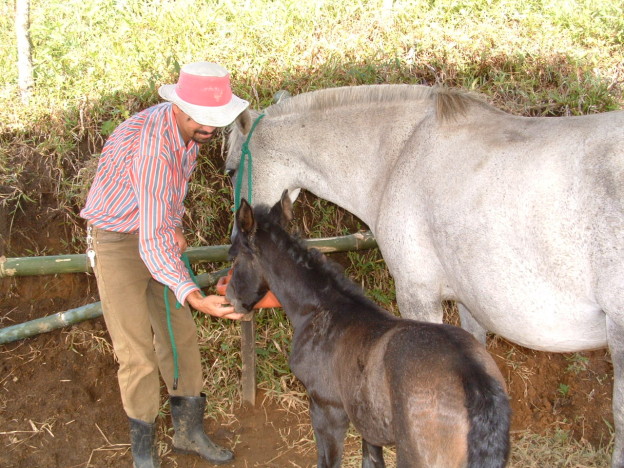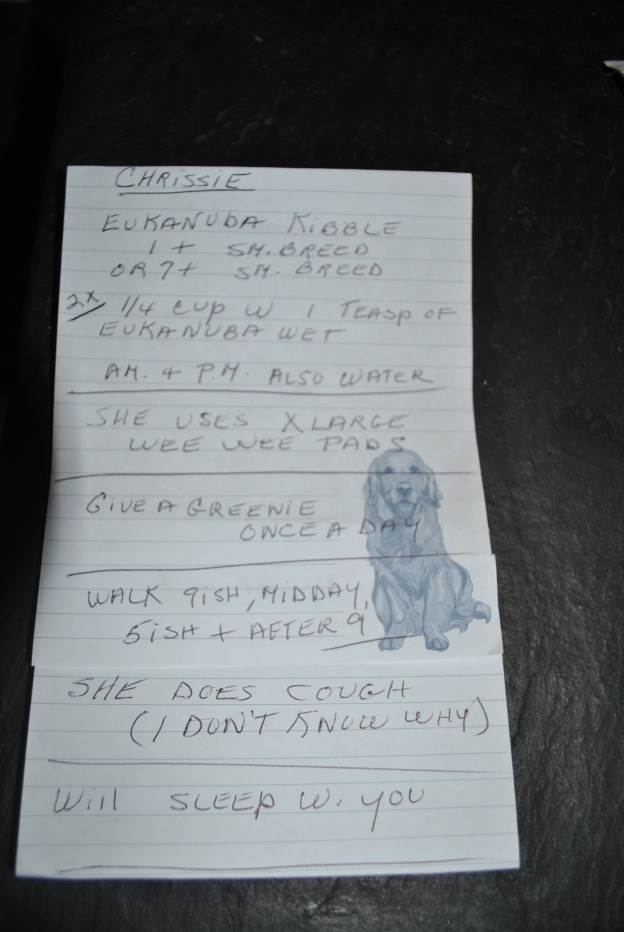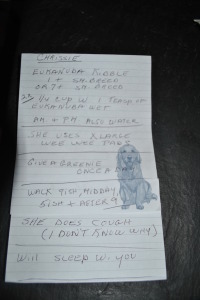Author Archives: admin
Because you love your pet, 10 easy Valentine’s Day gifts
Who’s your most reliable Valentine?
Right, it’s your pet. Fluffy never complains about your cold feed on long winter nights. Fido never picks the holiday of romance to announce he needs his space and wants to see other people.
You show your furry, scaly, feathered friends love every day, but for February 14, you may
want to do something extra. Something easy that won’t break the bank.
If someone in your life has a pet, make them part of the celebration too. Many of these ideas make practical gifts for friends and family. Even pets you don’t know, people you never met, could use your tender attention.
- Exercise your dog more. Research shows that walking is good for both of you. And bump it up a notch by walking on a balance board. To make those strolls even more effective, consider a canine fitness tracker like this fashionable bow tie from WonderWoof: https://www.wonderwoof.com/
- Take your cats in for an annual checkup. Cats are very good at hiding illness and pain. It’s easier on them and cheaper for you to catch problems before they get out of hand. If you don’t have a regular vet, ask your cat-loving friends where they go. Some clinics are certified by the American Association of Feline Practitioners as Cat Friendly Practices. See if there’s one near you. https://www.catvets.com/cat-owners/find-vets-and-practices
- Give a local rescue group your time, money, supplies, or expertise. Animal shelters always need help finding homes for the animals in their care. You can volunteer to socialize (cuddle) pets, update the donor list, or write marketing copy. Many private groups are run by hardworking people who pay for every bag of food out of their own pocket. Give them a hand. You can help animals on your own by making a shelter out of a plastic storage container for a feral cat. Here are some easy directions: https://www.alleycat.org/ShelterGallery#easy
- Learn how to take great pet & wildlife photos. Whether you use your phone’s camera or a fancy DSLR, you can get photos that capture your pet’s personality. Get on their level, wait for the right moment, and turn off your flash. And you don’t have to be a professional to snap a pic of a gorgeous cardinal at your bird feeder or a bunny in the backyard. You might even use your new skills to take portraits of older shelter dogs to improve their chances of finding a new home. Here are some tips for getting the shot you want. https://digital-photography-school.com/9-pet-photography-tips/
- Give your favorite animal lover a personalized gift using one of your photos or theirs. If your photo is sharp and clear, have it enlarged and frame it for their office or apartment. If it’s just a cute picture from your phone or one you downloaded from their social media page, have it put on a mug for their favorite hot beverage. Nothing shows more thoughtfulness than recognizing what other people value–Grandad’s furry hiking buddy or your neighbor’s budgie pal. Most big drug stores and print shops handle photo gifts. Here’s another site with ideas from puzzles to pillows. https://www.personalcreations.com/personalized-picture-frames-pphofrm?REF=PCRSRCHgoog_brand_mt_e_d_c_kwd_personal+creations&q=photo
- Help your cat make friends with people. Cats have not lived with humans as long as dogs have, so they are often less comfortable with people they don’t know. Because they are mostly indoor pets, cats have fewer chances to socialize. Many kitties hide whenever guests appear, or worse, hiss when someone tries to make friends. You can fix this. Make encounters with new people a reason for your feline friend to celebrate. Cuddle your pets, give them treats when visitors stop by. Get your guests involved. Have them play with any kitty brave enough to come out. Fishing pole toys are perfect. Cats love to chase the streamer, which makes your friend feel special too.
- Make a DIY cat condo. The internet is full of pictures of cats coiled like a spring in some barely-big-enough box. Cats love snug spaces. You can whip one together out of old an upside down side table draped with fabric, or stacked cardboard boxes taped together. Here’s a design for a tent made of a worn tee shirt and a couple of coat hangers. Your cat will probably jump in as soon as he spots it, but if not, entice him with a catnip toy. https://www.instructables.com/id/DIY-cat-tent/?ALLSTEPS
- Set up a fish tank in a local nursing home and volunteer to take care of it. Research has shown that older people eat more if there are animals around. Other studies show that contemplating a fish tank reduces anxiety. Check with your local senior residence and ask if they’d like to have a tank of colorful fish. This would make a perfect group project. Get your friends or your teen group to raise funds to buy the equipment and to care for the fish.
- Take your dog to visit petless neighbors who would love the contact but not the responsibility. Dogs are great icebreakers. They put people at ease, lower blood pressure, and give you something to talk about. Think about your family. Who doesn’t get enough friendly touch? Which of your neighbors reminisces about her childhood dog? Ask if next time you visit you can bring your well-behaved pooch. You might be surprised at what you learn about their current interests and past lives.
- Stimulate your pet’s mind and body. Enroll in an agility class with your dog. Take a clicker training class and teach your pet a behavior that will make them healthier, safer. Feed your cat from a puzzle bowl or hide their food around your apartment so they can hunt it. Get your parrot a safe toy or offer music that will inspire their big brains.
There you have it, 10 ways to show your love for pets and pet lovers. What’s your favorite way? Send us a picture of you doing something special for the pets in your life.

12 Top articles for pet lovers of 2015
If you’re an animal lover—civilian or professional—you know the special relationship we have with our fellow creatures makes our lives, and often theirs, better. Your encounters may be with a loved pet, service dog, store mascot, farm flock, local wildlife, or therapy animal.
All of these can lower your blood pressure and raise your happiness. In fact, the effect is so powerful, scientists study it as a safe way to prevent illness and heal the heart. Well-done studies don’t always show a benefit, but many do.
To celebrate the human-animal bond, here are 12 of my favorite articles from 2015. Some are rigorous research findings. Others tell the story of one kind of animal helping another. All of them will make you smile.
- Tiny stray dog saves dying man. Stray dog and dying man save each other. When this little dog chose their car and jumped in, Bill’s wife was bringing him home from surgery for advanced cancer. Read how they gave each other the strength to go on. https://buff.ly/1AMC47A
- Beneficial effects of animal-assisted visits on quality of life during multimodal radiation-chemotherapy regimens. B. Fleishman, P. Homel, M.R. Chen, V. Rosenwald, V.Abolencia, J. Gerber, and S. Nadesan. Animal assisted visits improved social and emotional wellbeing in patients with head and neck cancer, even as their physical health declined. https://www.ncbi.nlm.nih.gov/pubmed/?term=Bene%C2%80cial+effects+of+animal-assisted+visits+on+quality+of+life+during+multimodal+radiation-chemotherapy+regimens+Stewart+B+Fleishman+et+al
- Kitty compassion: Stray cat saves homeless baby’s life. Samantha Laine. (Article & video) Stray tabby finds abandoned Russian baby in dead of winter, keeps her warm and meows till someone comes. https://www.csmonitor.com/The-Culture/2015/0117/Kitty-compassion-Stray-cat-saves-homeless-baby-s-life-video
- Pet Talk: Human-animal bond a lifeline to those living on the fringes. Monique Balas. Pets keep homeless and mentally ill people grounded, give them a reason to get help. https://www.oregonlive.com/pets/index.ssf/2015/01/pet_talk_human-animal_bond_a_l.html
- The girl who gets gifts from birds. Katy Sewall. Little girl began feeding the neighborhood crows. Now they bring her presents. https://www.bbc.com/news/magazine-31604026
- Horses Helped This Vet With PTSD After No One Else Could. Tim Hayes. Iraqi veteran suffers severe PTSD, tries everything from exercise to diets to 5-mile runs, gets nowhere till she meets a horse on the road. https://www.huffingtonpost.com/tim-hayes/horses-for-heroes-healing_1_b_7425962.html
- Informing Children in a Therapeutic School about the End of Life for the Animals in its Animal-Assisted Education and Therapy Programs; How One Organization Handles this Difficult Process. Miyako Kinoshita. Children at residential treatment and special education facility, who have already lost a lot, learn to handle loss of favorite animals. https://www.latham.org/Issues/LL_15_SP.pdf#page=14
- Ancient bobcat buried like a human being. David Grimm. Rare 2000-year-old burial contains bobcat buried with necklace of bear teeth & shells in human burial mound. The 1-of-a-kind discovery “suggests this animal had a very special place in the life of these people.” https://buff.ly/1NFetcm
- ABC News. (Video).Thoroughbred racehorses get a second career with men who need a second chance. Program in New York saves horses and gives prisoners a way to contribute to society. https://www.facebook.com/abcnews/videos/10153485692358812/
- Meet the therapy dogs who comforted during theater trial. (Video). Carefully trained theapy dogs provided support during trial to families impacted by the Aurora, Colorado mass shooting. https://www.usatoday.com/videos/news/nation/2015/08/13/31528311/
- Psychological stress affects nearly 1 in 10 veterinarians. Phyllis DeGioia. New study shows many veterinarians suffer severe stress, and fear getting help will hurt their career. Happily peer and professional support is growing. https://buff.ly/1MpwHiN
- Pet Dogs and Children’s Health: Opportunities for Chronic Disease Prevention? A. M. Gadomski, M. B. Scribani, N. Krups, P. Jenkins, Z. Nagykaldi, & A. L. Olson. Dogs protect regular kids from anxiety, says major study from Centers for Disease Control. Children with dogs watched as much screen and had the same BMI scores as those without dogs, but had less fear of being alone or meeting people. https://www.cdc.gov/pcd/issues/2015/15_0204.htm
Which human-animal bond stories made you smile this year? Drop Dr. Susan a note here at PetDecisions.com and tell her your favorites and what you’d like to see in 2016.
17 powerful quotes that will make you an outstanding leader
 Wondering how to get out of a rut and inspire your organization to be great? These are quotes from successful leaders in many fields. They range from poets and proverbs to writers and warriors. There’s something here for everyone, no matter what your style.
Wondering how to get out of a rut and inspire your organization to be great? These are quotes from successful leaders in many fields. They range from poets and proverbs to writers and warriors. There’s something here for everyone, no matter what your style.
- “Our chief want is someone who will inspire us to be what we know we could be.” Ralph Waldo Emerson
- “As a leader, you’re probably not doing a good job unless your employees can do a good impression of you when you are not around.” Patrick Lencioni
- “You don’t drown by falling in the water; you drown by staying there.” Edwin Louis Cole
- “Better leaders create a story that inspires people. They do so by keeping things simple, expressing their most important core value, clarifying boundaries of responsibility and staying consistent.” Bruce Avollo and Fred Luthans
- “Wisdom is the reward you get for a lifetime of listening when you’d have preferred to talk.” Doug Larson
- “Never tell people how to do things. Tell them what to do and they will surprise you with their ingenuity.” George S. Patton
- “Character consists of what you do on the third and fourth tries.” James A. Michener
- “A leader is a dealer in hope.” Napoleon Bonaparte
- “A genuine leader is not a searcher for consensus but a molder of consensus.”
Martin Luther King, Jr.
- “The most difficult thing is the decision to act, the rest is merely tenacity.” Emelia Earhart
- “It is better to lead from behind and to put others in front, especially when you celebrate victory when nice things occur. You take the front line when there is danger. Then people will appreciate your leadership.” Nelson Mandela
- “Not the cry, but the flight of a wild duck, leads the flock to fly and follow.” Chinese Proverb
- “Great leaders are almost always great simplifiers, who can cut through argument, debate, and doubt to offer a solution everybody can understand.” General Colin Powell
- “You don’t lead by hitting people over the head—that’s assault, not leadership.” Dwight Eisenhower
- “If you want to build a ship, don’t drum up the people to collect wood and don’t assign them tasks and work, but rather teach them to long for the endless immensity of the sea.”Antoine de Saint-Exupery
- “We’re here for a reason. I believe a bit of the reason is to throw little torches out to lead people through the dark.” Whoopi Goldberg
- “I don’t look to jump over 7-foot bars; I look around for 1-foot bars that I can step over.” Warren Buffet
What are your favorite quotes? Are they your private pleasure or do you post them to encourage your colleagues? Please share them with us.
And if you found these quotes got you thinking, please share the link with your staff.

The secret reason your clients are afraid
There’s a problem in your office that gets in the way of doing what you went into veterinary medicine to do: Make animals well and win the hearts of their caretakers. Your clients are afraid, but not for the reason you think.
What scares clients that you know about
As a veterinarian or technician, you have plenty of conversations with clients that might scare them, at least at first.
They bring their pet in for a simple checkup, and you find a lump. They think their dog has a nosebleed, you suspect cancer. They’re glad their tubby cat has finally lost weight, and you have to tell them it’s diabetes and then explain insulin injections.
You probably have your own special techniques for calming clients when you know they are afraid. Maybe you’ve practiced a Dr. Herriot smile that makes you look wise. Or you have a simple analogy to explain how the brain works. “See, it’s like a lightbulb.” You’ve learned to look for clients’ shoulders to relax when they realize they can pill their cat.
But what about the ones who are going to pieces right in your office? Maybe before you even walk in the room.
What scares clients that you don’t know about
“How can that be?” you ask. You haven’t even looked at their pet, so what are they scared about?
Let’s leave aside the possibility that they came in because they had found something that worried them. And then looked it up on the internet. And asked their Facebook friends what they thought. Assume they were fine till they hit your front door. What could have gone wrong?
Think about off-hand remarks. Overheard complaints. A funny look on the face of one of your co-workers. Or your lengthy silence while you stare into their dog’s eye.
Let me give you an example. Yesterday I went to the dentist for a routine cleaning and partial x-rays. I’m fine with the dentist, but by the time they were done, I needed a neck brace for emotional whiplash.
As we were getting started, I mentioned in passing that my gums were a little sensitive and that a bruisey-looking thing that I’d had for years had gotten swollen last week and was now better. Suddenly they were recommending a full set of x-rays and a quick check by the oral surgeon downstairs. “It could be a dying nerve”, the hygienist speculated as she scurried out of the room. “Dying nerve?”
The oral surgeon, a big middle-aged guy with huge hands, swaggered in, drew on his gloves, and tried to yank my lower lip into the backyard. He jabbed every tender spot and announced it was probably a swollen salivary gland that would take care of itself. “It’s not a tumor except in the broadest sense of the word.” “Tumor?”
“If it gets bigger and really bothers you, we can remove it. Of course with the architecture of your mouth, that would be some surgery.” “Holy cow. The expert thinks this would be ‘some surgery’?” And as he rode out of sight, he tossed off “It’s nothing to lose sleep over.”
Put yourself in my shoes. I came in for a routine event, no drama. But when several professionals looked worried and casually threw around tumors and nerve death, my whole day veered off course like a doomed rocket. It managed to fly straight again for two reasons: 1) The team figured out pretty fast that nothing was wrong; 2) I politely spoke up about how heavy-handed and brusque the consult was. The hygienist acknowledged that it was true and that she’d heard it before.
If your clients speak up about their concerns and ask you questions, you’ll have a chance to clear things up too. But what if they don’t tell you?
What’s the big deal?
A panicking client can’t concentrate on you or make decisions. She’s tuned into the radio station in her head that’s saying, “Run for your life. Martians have landed in New Jersey.”
Clients who feel blindsided by bad news inexplicably refuse to let you do tests. They stall so they can wrap their minds around this potential disaster. If they overhear your staff express curiosity about how this will turn out, your clients seethe because employees seem nonchalant about finding a problem in their pet. They may even feel you manipulated their fears to get them to spend money.
But if you don’t figure out that they are unnerved by something they’ve heard, you won’t know what’s going wrong.
How to fix your clients’ secret fears
Since reading minds is hard, you want to prevent secret fears and intervene if they happen. Here’s how.
- Make your office a calming environment. Use distractions, like music, a TV, or an aquarium to give clients somewhere to focus besides their anxieties.
- If you sense clients are confused, say something like “Let’s pause. Let’s take a break.” Then ask if they have any questions so far.
- Breathe easily as you examine the pet. It will calm everyone in the room.
- Talk as you work, so clients know what you are doing. Incidentally, when clients recognize the time and skill that went into the exam, they are more willing to pay your bill.
- Don’t casually speculate about bad possibilities. Wait till you do at least a brief exam and have some evidence for your assessment.
- Watch what you say where civilians can hear you. Complaints about coworkers, blaming others when you can’t find something suggests this is a badly run place with interoffice drama—not a place you want to trust your pet to.
- At the end of every encounter, review what you did and what the options are. That way, if your clients tuned out for a while to take stock, you have another chance to get through them. If you suspect something you’ve said might disturb them, acknowledge it. “I know this isn’t what you expected when you came in today. It’s a lot to take in. How are you doing with all this?”
If you liked this article, please leave a comment. And if you really liked it, please share the link.
If you’re having client communication problems, Dr. Susan would be happy to meet with you and your staff.

Be a better doctor with stuff you already own
If you’re a veterinarian, you’re in a bind.
How can you take great care of patients, educate staff, keep clients happy, grow your business, and still make money in this competitive market? Clients demand top quality pet care, but they want to save money. They also want their pet’s healthcare team to keep in close touch and to include them in planning. For their part animal health professionals want to provide care in a way that helps pets, satisfies clients, and pays the bills for the practice.
It’s tempting to think that buying the latest gadget will make your practice stand out and attract business. If you have a real need and know it will get used a lot, a specialized tool can give you bragging rights on your Facebook page. If not, that shiny new toy just takes up space.
Smart devices
But there’s a cheaper, easier option right in your pocket. Use the smart phones and tablets you already own to make money, save money, and provide better client service and pet healthcare. The beauty of this? You already know how to make them work. There’s no manual, no time lost to training.
Phones and tablets let you monitor your patients, fine tune care, and tap the commitment and skill of colleagues and clients to keep pets healthier at less cost. Good use of technology saves you time and lets you delegate conversations and client education to others.
Check out these 17 ways to use your smart devices:
1. Track the progress of pet care at home, such as weight management, by having clients text you updates.
2. Use an app or your own checklist to help clients evaluate pain in their pet.
3. Use your smart phone to monitor vitals and illness. Devices like the PetPace smart collar https://petpace.com/ allow you to track and analyze data and to receive alerts minute by minute.
4. Encourage your clients to keep up with treatment by texting non-judgmental messages every few days. Make sure you provide a way for them to write you back. Conversation is key to cooperation.
5. Improve in-house education by using free web conferencing tools, like Google+ Hangout or Big Blue Button.
6. Use a medical calculation app to figure dosages.
7. Use your tablet to take notes for your electronic medical record or to check information on VIN (Veterinary Information Network) right in the exam room.
8. Use your tablet or digital camera to take pictures of pets, so their families can keep up to date. This is especially helpful when patients are hospitalized. A picture of their loved one resting comfortably or wagging its tail reassures families that your staff is kind as well as competent. You can also add those photographs to the pet’s medical record.
9. Make your tablet a tool to educate clients. For example, show clients how to give sub- cutaneous fluids to their cat by showing them a video on YouTube. That way you can watch it together and answer any questions they may have. You can also introduce them to websites you think have the most accurate information. You may even have a PowerPoint presentation of your own to share with them.
10. Use a storage site like Drop Box to share photographs, radiographs, and any other files among your computers.
11. Use your tablet’s “virtual desktop” to share radiographs (x-rays) with your clients, so they understand what’s wrong and what you plan to do about it. Especially for visual learners, a picture is worth 1000 words.
12. Use sound effects apps to test a pet’s reactions and to help desensitize them from the things they are afraid of. You can also use one sound to muffle other sounds from the waiting room that can disturb a nervous pet. For example, you can make your practice more cat-friendly by putting them in a room with sounds that block the noise of barking dogs.
13. Use the timers on your equipment to track how you spend your time. You may be surprised. Think about one part of your day, like meetings or data entry. How long does that activity actually take?
14. Have clients video record behavior that occurs at home but not in the office. How many times have you had a client say, “My dog had an episode at the dog park that looked like a seizure, but who knows?” Or, “I swear, she was limping this morning.” Now you can see what they see. Make sure they know that sending you a photo doesn’t take the place of an exam.
15. A variation on #14 is to have clients record behavior problems and their surroundings. For example, if a client complains her cat urinates outside the box, have her take pictures where every box is located. She might even video what the cat does in the box, such as perching on the sides. You may be able to tell at a glance that the box is too enclosed or that the cat is avoiding that kind of litter. Solving problem behaviors keeps pets from being surrendered to shelters.
16. Ask clients to video themselves doing health-related tasks, such as drawing up insulin and injecting their pet. You might also ask them to send you before-and-after pictures of injury healing, photos that can go right into your electronic medical record.
17. Use your brain and your tablet’s for what they do best. Let your smart device’s capacity remember those obscure, once-in-a-lifetime medical possibilities. Tap your people skills and professional experience to make the most of client time. Learn what they know, what their concerns are, and how they feel about what your recommendations.
How it works
Here’s a real-life example of how using everyday devices can save you time and make your clients happier. I used to work at a big veterinary teaching hospital in New York City. New Yorkers are smart and tough. They don’t just take your word for things. They want proof, and they demand service. A liberal visiting policy isn’t always enough. Some want to sit by the cage or call their doctor every two hours for an update.
When you think about it, it makes sense. When our human family is laid up, we get to spend hours at their bedside, holding their hand and asking questions of the staff. We can see for ourselves whether their room is clean and if the nurses are compassionate. With pets it’s different. Most veterinary clinics don’t have room for extra people to pull up a chair by a cage and hang out. Veterinary nurses can’t stop to explain what they are doing or answer phone calls.
Then the doctors got new mobile phones. With cameras. Not only could they email clients, they could send pictures of pets doing better. Clients were delighted, and doctors enjoyed spreading good news. And with emails doctors could document their client contact without having to write a separate report.
And that’s how smart devices allow veterinary teams to provide better pet care and client service in less time with less hassle.
Caution
For all the good that smart devices do, it’s important to set limits to their use. Give yourself tech time out. Don’t check your phone at dinner. Tell clients what hours it’s OK to message you and stick to it. And have an office phone or other system so calls go to the veterinarian on duty and don’t give away your personal number.
If you have trouble staying away from your smart devices, use apps that block emails during certain hours. Can’t let go of work? Practice meditation to learn how to stay in the present moment.
What are your favorite ways of using tablets and smart phones around the office? Let us know! Maybe you’ll see your tip in a future post.

5 things to do for your pet before you get sick
My friend Lucy just had a medical emergency that took her away from home and her beloved toy poodle, Chrissy, for six weeks. Another dog lover took Chrissy for a few days but couldn’t keep her. Was Chrissy going to be homeless? People have dumped pets in the street for less.
Clearly this kind of emergency is something all pet lovers need to plan for.
You can’t wait till disaster strikes to think about who will walk the dog and feed the cat if you are temporarily out of commission. Whether you have a boarding kennel lined up or need to phone a friend, you need to plan ahead.
Here’s what to do.
Make a list.  First, think about what you do daily and make a list. “Walk the dog at 7:30 am, 2:30 pm, and again at 9:00 pm; dry food in the morning, wet at night.” Take a few pictures so someone else knows, for example, which scoop you measure food with. If your daily routine involves medication, take lots of photos and mark any measuring devices, such as a syringe, with permanent marker to show exactly how much to use. Here’s the list Chrissy’s temporary caretaker made. You notice she adds the all-important information that Chrissy “will want to sleep with you.”
First, think about what you do daily and make a list. “Walk the dog at 7:30 am, 2:30 pm, and again at 9:00 pm; dry food in the morning, wet at night.” Take a few pictures so someone else knows, for example, which scoop you measure food with. If your daily routine involves medication, take lots of photos and mark any measuring devices, such as a syringe, with permanent marker to show exactly how much to use. Here’s the list Chrissy’s temporary caretaker made. You notice she adds the all-important information that Chrissy “will want to sleep with you.”
Gather supplies.
Next think about what supplies you need to do those things—bird seed, pee pee pads, cat carrier—and add that to your list. Don’t forget your pet’s favorite toy. Make sure you always have a few days’ worth of the essentials in the house at all times. Here’s what Chrissy came with– plus winter coats.
Decide who can handle different tasks.
After that, consider who could manage the different things your pet needs. The neighbor who loves cats may not be willing to give your diabetic kitty her insulin injections. Or walk your 50-pound dog. You may have to divide your pets and tasks to get it all done.
Once you have a list of prospective caregivers, talk to them and get their OK. Double check that their whole family is on board with having your 65-lb dog, who needs three walks a day, for a two-week sleepover. Give them a copy of your instructions and print a copy to hang on your refrigerator in case the first list gets lost.
Remove obstacles.
The next step is to think about any obstacles that might get in the way. Will building management allow your volunteer caretaker to have a pet, even for a short time? Are your pet’s license and vaccines up to date in case he needs to go to a boarding facility? If your pet gets sick, which veterinarian should she go to, yours or your caregiver’s?
Make a long-term plan.
Finally, do some long-term planning. Do you have a Plan B in case your first-choice caregiver is out of town or out of patience? What’s to be done if your medical problem causes a long-term or permanent separation? Can you afford to give your friend some help with expenses in exchange for adopting your furry friend into a safe, loving home?
How it all turned out. In the end, Chrissy was not homeless. Lucy had discussed this kind of emergency with her regular pet sitter, who kept Chrissy till someone else could take over. The sitter wrote extensive notes, packed everything a little dog could need, and generously shared her expertise as a pet professional. Chrissy settled into a new family in a new neighborhood until her person was strong enough to come home.
In fact, knowing her dog was waiting inspired Lucy to work extra hard in physical therapy, so she could take Chrissy for her usual walks in the park.
We’d love to hear about your experience caring for a friend’s pet. What do you wish you’d known? What tips can you share with your fellow animal lovers?









